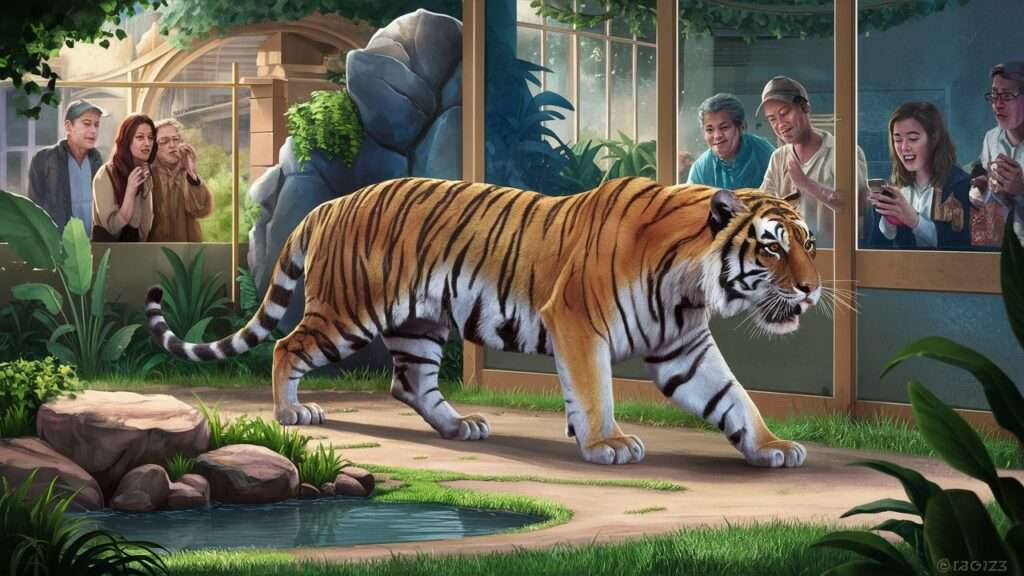A Tiger In The Zoo Class 10 Question Answer Accurate NCERT Solutions for Class 10 English Chapter 2 are provided by BYJU’S. The solutions cover one prose lesson, “Nelson Mandela: Long Walk to Freedom,” and one poem, “A Tiger in the Zoo.” Our team of knowledgeable professors solves the Class 10 NCERT Solutions to give pupils in that class well-organized answers.
Because the solutions are written in simple English, students will have no trouble understanding the material and will be prepared to take the English exam with confidence. To help you with your preparations, you may access the chapter’s NCERT Solutions in PDF format by clicking the link below.
Reading “A Tiger in the Zoo,” a powerful poem by Leslie Norris, captivates readers with the heartbreaking contrast between a tiger’s regal strength and the restrictions of its cage. This thoughtful composition explores the idea of lost freedom by vividly illuminating a creature whose innate tendencies are suppressed by the bars of its cage. Norris emphasizes the emotional and psychological costs of keeping wild creatures in captivity with the tiger’s subdued motions and solemn attitude. We’ll talk about the poem’s themes, imagery, and important lessons regarding the limits placed on the natural world by human activity in this blog post.

1. Question: What is the theme of the poem “A Tiger in the Zoo”?
Answer: The theme of the poem revolves around the stark contrast between the tiger’s natural, wild instincts and its constrained life in captivity. It highlights the loss of freedom, dignity, and the animal’s frustration and helplessness in a zoo setting compared to its natural habitat.
2. Question: How does the poet describe the tiger’s appearance in the zoo?
Answer: The poet describes the tiger in the zoo as a majestic but confined creature. Its strong, sleek body is contrasted with its restrained movements and languid demeanor. The tiger’s appearance is both powerful and sad, reflecting its imprisonment and the loss of its natural prowess.
3. Question: What does the poet suggest about the tiger’s behavior in the zoo?
Answer: The poet suggests that the tiger’s behavior in the zoo is one of boredom and frustration. The tiger, which should be roaming freely in the wild, is reduced to a mere spectacle, pacing up and down in its cage. This behavior indicates its distress and yearning for freedom.
4. Question: How does the poem depict the contrast between the tiger’s life in the zoo and in the jungle?
Answer: The poem vividly contrasts the tiger’s life in the zoo with its life in the jungle. In the jungle, the tiger is depicted as a powerful, free creature, roaming and hunting. In contrast, in the zoo, it is depicted as a mere shadow of its former self, caged and powerless, its natural instincts suppressed and its freedom denied.
5. Question: What emotions does the poet evoke through the depiction of the tiger’s captivity?
Answer: The poet evokes emotions of sadness, frustration, and sympathy through the depiction of the tiger’s captivity. The contrast between the tiger’s majestic appearance and its confined, restless behavior in the zoo elicits a sense of injustice and pity for the creature’s lost freedom.






